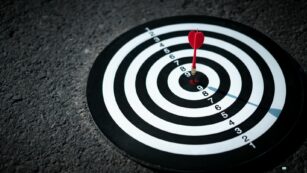In a world brimming with aspirations and ambitions, the journey to achieving one’s goals can often feel like navigating through a labyrinth. That’s where goal setting books come into play, serving as compasses that guide readers through the intricate process of setting and achieving objectives. These books not only offer structured methodologies but also inspire and motivate individuals to push beyond their limits and realize their full potential.
Goal Setting Books
Goal setting books equip individuals with the tools needed to set and achieve their personal and professional goals. These resources serve as guides, providing structured techniques and motivational insights that aid in goal realization.
Why Goals Matter in Personal Growth
 Understanding why goals are crucial to personal growth identifies their role in providing direction and purpose. Goals set the framework for measuring progress and foster continuous improvement in various aspects of one’s life. By setting specific targets, individuals gain clarity that fuels their drive and determination. Books on goal setting frequently highlight stories of resilience and success, illustrating the transformative power of well-defined goals in achieving personal fulfillment and professional success.
Understanding why goals are crucial to personal growth identifies their role in providing direction and purpose. Goals set the framework for measuring progress and foster continuous improvement in various aspects of one’s life. By setting specific targets, individuals gain clarity that fuels their drive and determination. Books on goal setting frequently highlight stories of resilience and success, illustrating the transformative power of well-defined goals in achieving personal fulfillment and professional success.
Psychological Benefits of Setting HaGs
Setting goals has a significant positive impact on mental health and psychological well-being. Goals provide a sense of achievement and reward, boosting self-esteem and self-confidence when milestones are reached. Furthermore, they enhance mental focus and help reduce feelings of overwhelm by dividing larger tasks into manageable steps. Goal setting books often delve into strategies for maintaining a positive mental attitude, even in the face of setbacks, ensuring individuals remain motivated and resilient.
Top Goal Setting Books of the Year
Goal setting books serve as essential tools for those seeking to improve their personal and professional lives. They guide readers through the complexities of crafting attainable goals and strategies to achieve them effectively.
Books for Professional Development
1. “Atomic Habits” by James Clear
“Atomic Habits” by James Clear
This text offers a practical framework for improving performance and efficiency in the workplace. Readers learn how small adjustments can lead to remarkable results in professional settings.
2. “Drive: The Surprising Truth About What Motivates Us” by Daniel H. Pink
The book focuses on the modern workplace’s dynamics, revealing what truly motivates professionals beyond traditional rewards. It’s crucial for anyone looking to understand motivational strategies in a professional context.
3. “Smarter Faster Better: The Secrets of Being Productive in Life and Business” by Charles Duhigg
Exploring the science of productivity, this book provides insights into making better decisions, setting professional goals, and fostering a new culture of efficiency at work.
Books for Personal Achievements
1. “The 7 Habits of Highly Effective People” by Stephen R. Covey
Renowned for its comprehensive approach to personal change, this book offers readers a pathway for achieving personal goals through proactive behavior and strategic planning.
2. “The Power of Now” by Eckhart Tolle
Tolle’s guide emphasizes the importance of living in the present moment, a crucial element for those seeking to achieve personal goals. It teaches how mindfulness can be the key to overcoming life’s challenges.
3. “Daring Greatly” by Brené Brown
This book delves into the power of vulnerability when chasing personal achievements. Brown provides a blueprint for transforming vulnerability into a strength in personal development.
Key Techniques From Top Goal Setting Books
Top goal setting books introduce powerful techniques that transform the way individuals approach their aspirations and challenges. These resources provide actionable insights that lead to personal and professional growth.
SMART Goal Framework
 One prominent technique featured in several leading goal setting books involves the SMART goal framework. This method encourages setting goals that are Specific, Measurable, Achievable, Relevant, and Time-bound.
One prominent technique featured in several leading goal setting books involves the SMART goal framework. This method encourages setting goals that are Specific, Measurable, Achievable, Relevant, and Time-bound.
-
Utilizing the “Specific” criterion ensures that goals are well-defined and clear. For instance, instead of aiming to “increase sales,” a more specific goal would be “increase sales by 20% within the next quarter.”
-
Applying “Measurable” aspects allows tracking progress and adjustments. This might involve regular assessments of incremental sales increases month over month.
-
Setting “Achievable” goals involves assessing current resources and capacities, ensuring that goals are realistic and attainable within given constraints.
-
Assessing the “Relevance” of a goal ensures it aligns with broader objectives, whether for personal growth or aligning with a company’s strategic plans.
-
Implementing a “Time-bound” element establishes a deadline, which aids in maintaining focus and momentum toward achieving the goal.

